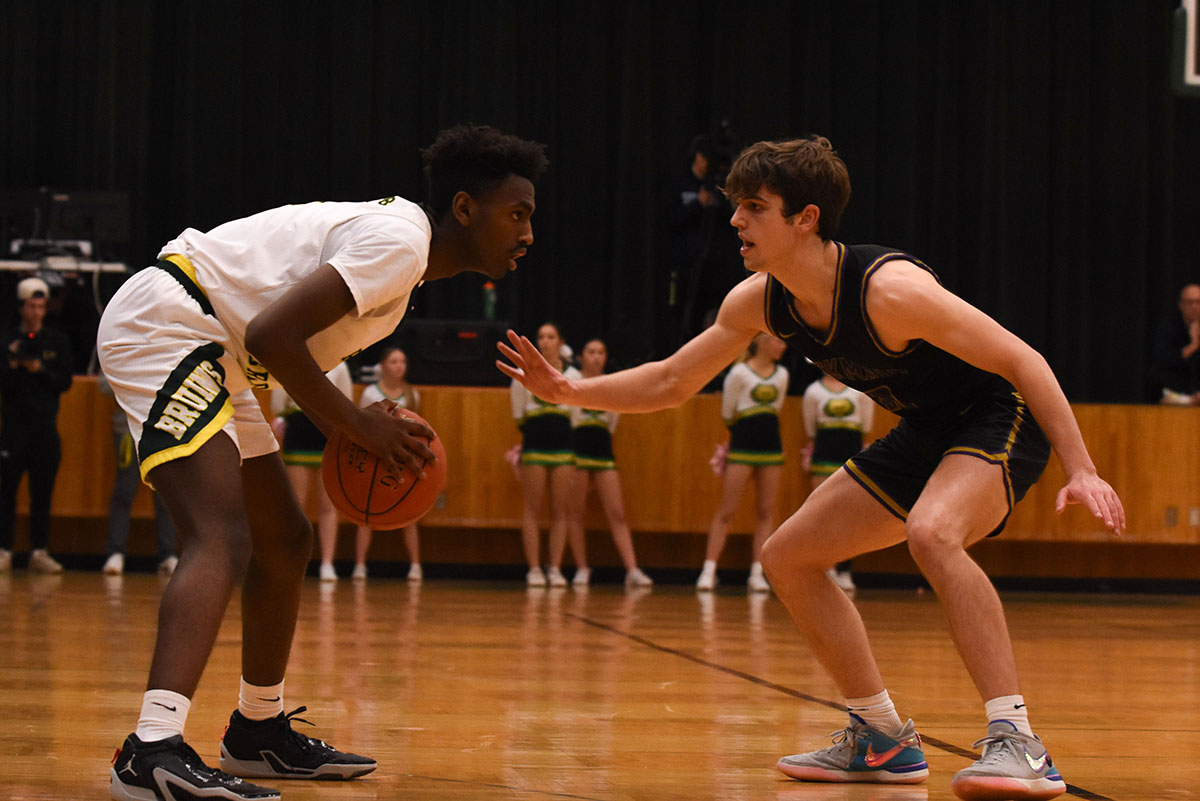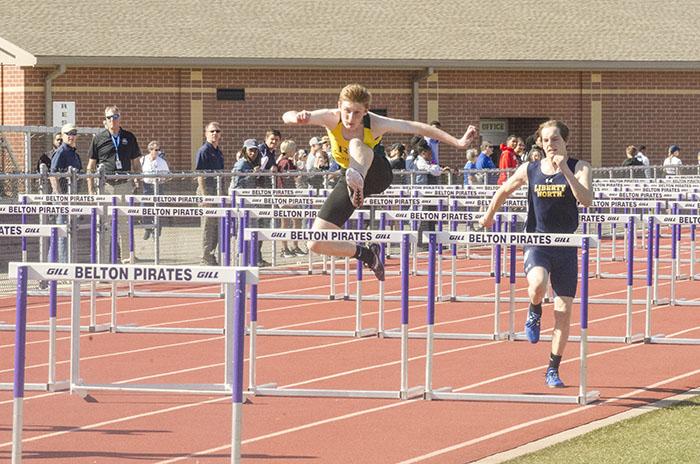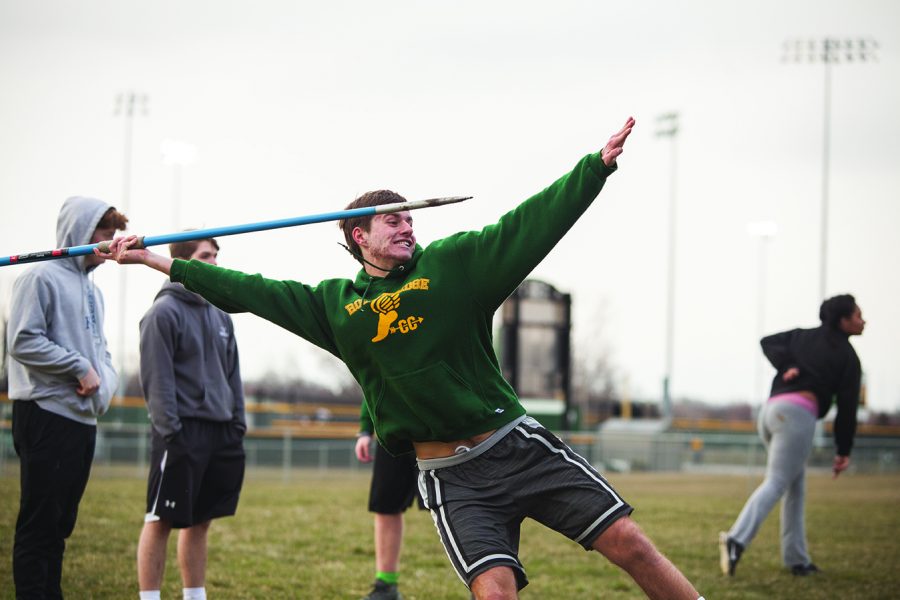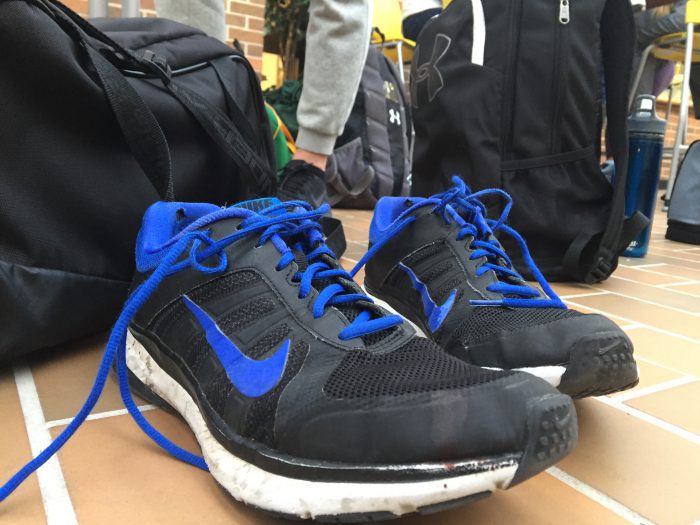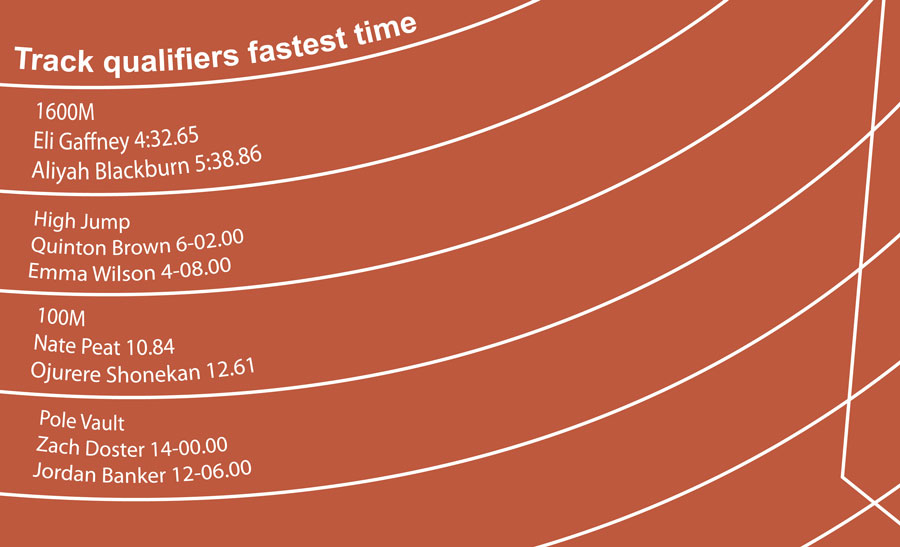
Settling into the warm weather of late spring, RBHS track has moved into post season. The avid runners’ toned bodies can be seen each afternoon circling the track. Their rubber soles smack the pavement while coaches spout out times as the runners come zipping across the finish line.
Athletes show gratified smiles as teammates provide one another with congratulatory pats on the back following the completion of workouts and races.
At first glance, the track team seems to be a close knit family of athletes working to achieve difficult goals.
However, behind this thin veil of camaraderie and sportsmanship, a clear divide exists within the team – an unspoken but well known conflict between the short distance sprinters and those who participate in longer distance events.
Sophomore Savannah Johnson, a long distance runner, explains there is a “pretty big rivalry” between the two groups of runners. She says this tension can largely be attributed to the dispute over the difficulty level of both group’s workouts.
“The sprinters are used to always getting the track because that’s what they always practice on, and they forget sometimes that they have to share it with us because we need to do our workouts too,” Johnson said. “They seem to think that their workouts are more important to get done.”
She disagrees that the sprinters work harder, however, explaining the distance runners’ times may be slower than those of the sprinters, but they often have a significantly greater number of laps during workouts, and thus run for much longer.
Senior and fellow distance runner Jordan Reynolds agrees with Johnson’s perspective.
“In reality, we are the ones who do the most work out of the entire team,” Reynolds said. “They run for a solid 30 minutes. We go an hour and a half.”
Junior John Rodenbaugh, a sprinter, strongly opposes the belief that distance workouts are more difficult, confirming Reynolds’ view on the superiority complex.
“Distance always says that we don’t do any work. But sprinters simply say that they can’t do what we can do… and it’s true,” Rodenbaugh said. “Anybody can run five miles, but none of the distance people can run as fast as we do in sprinting.”
Junior Sienna Trice, a fellow sprinter, agrees that much of the conflict arises out of a desire to prove “which [running group] is harder and which one takes more talent and ability.”
Trice explains this argument often leads to tension over sharing the track during workouts. She believes the variance of speed between each groups’ workouts is at the root of this problem.
“When we’re doing workouts on the track, the sprinters usually go really fast and distance will do slower stuff.” Trice said “The sprinters will usually get in their own lanes, but sometimes the distance runners will get in the way of their lanes. When we’re running fast and we yell track and they don’t get out of the way. It causes a lot of arguments.”
These arguments are evident to other members of the team as well.
“A lot of times the sprinters will just claim the track because they believe that they are the higher order of the track team,” Reynolds said. “I’ve had a couple of days where I’ve had to get into an argument with the sprinters because of this.”
Johnson recalls similar experiences when the track has caused unrest among teammates.
“Sprinters will come running along and push through our group and yell ‘Track! Track!’ And it’s both annoying and rude,” Johnson said. “It would take two seconds for them to turn slightly to the right and go around us, rather than to barrel through us all the time.”
The head coach of the Bruin track team, Neal Blackburn, views the rivalry between the two running groups with a different outlook.
“I think that sometimes there is a rivalry for attention,” Blackburn said. “Like with regards to making sure that all the coaches are able to see how they’re achieving, and I think the distance runners sometimes think that the sprinters don’t have it as difficult as they do, so I think that there’s sometimes a feeling of resentment.”
Despite the rigidity, Blackburn believes in his athletes to handle the situation with a great deal of maturity and a sense of sportsmanship.
“I think we are beginning to create a little more of a mutual respect instead of a feeling that they are working against each other,” Blackburn said. “They understand that we can only be as good as what each group has to offer.”
By Anna Wright











































































